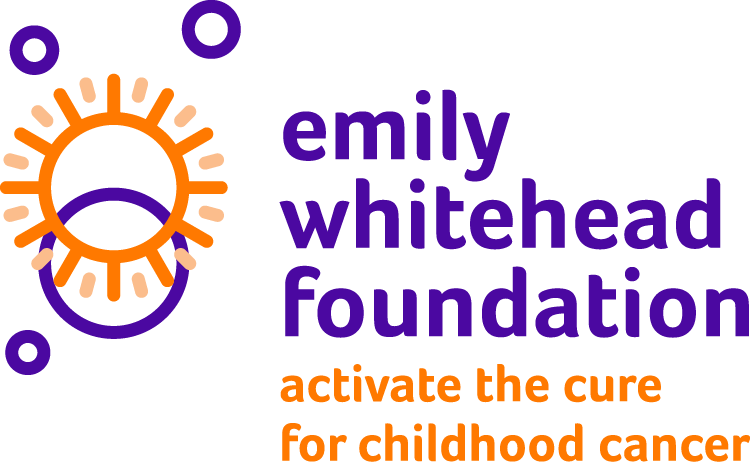Together, we will Activate the Cure.
Our mission is to raise funding for CAR T-cell therapy research because this treatment is less toxic and more targeted than standard chemotherapy or radiation. Less toxic treatments for treating childhood cancer are greatly needed because children have to live with the harsh side effects of standard treatments for much longer than adults.

What is CAR T-cell Therapy?
CAR (chimeric antigen receptor) T-cell therapy is a promising new cancer treatment that activates a patient’s immune system to attack and destroy cancer cells.
The process works by removing a patient’s T-cells, a type of white blood cell, and reprogramming them to recognize specific cancer-identifying antigens on cancer cells. Once activated, these T-cells become CAR T-cells capable of detecting these antigens and destroying the cancer cells.
Watch the 3-minute documentary “Fire with Fire” that highlights CAR T-cell therapy and Emily’s recovery.
CAR T-cell therapy is referred to as a “living drug.” Modified T-cells can detect and destroy cancer cells in your body for many years.
Once you and your doctor have determined that CAR T-cell therapy is right for you, the process of activating your T-cells to become cancer-fighting CAR T-cells can begin.
1. T-cells are removed from your blood in a process called apheresis.
During apheresis (also called leukapheresis), blood is withdrawn from your body, the T-cells are removed, and the rest of your blood is returned. The process is similar to giving certain types of blood donations, and typically takes 3 to 6 hours. This process is also sometimes referred to as “harvesting” T-cells.
2. The T-cells are reprogrammed to become CAR T-cells.
The T-cells are sent to a manufacturing laboratory to be genetically modified and activated as CAR (chimeric antigen receptor) T-cells. The CAR T-cells are then multiplied or “expanded” to increase the number of cells that will be returned to your body to fight your cancer. The newly activated CAR T-cells are then frozen and sent back to the hospital or clinic where you are being treated.
The amount of time that it takes for this process to be complete will vary for each patient, but typically takes several weeks to several months. During this time, your doctor may recommend a short course of low dose chemotherapy to help control your cancer and prepare your body to receive the CAR T-cells.
3. The CAR T-cells are infused back into your body to help fight your cancer.
At the hospital, your CAR T-cells will be received through an infusion into your bloodstream. The infusion process usually takes less than one hour, and is often administered as an outpatient procedure in the clinic. Once in the body, the modified CAR T-cells should continue to multiply and seek out and destroy cancer cells.
-
Who can receive CAR T-cell therapy?
CAR T-cell therapy is currently available only for some types of advanced B-cell blood cancers, including acute lymphoblastic leukemia (ALL) and diffuse large B-cell lymphoma (DLBCL). Eligible patients are those whose cancer has relapsed or is resistant to standard treatment, such as chemotherapy, radiation and bone marrow transplant.
Research is ongoing for using CAR T-cell therapy to treat other types of cancer, including solid tumors, and may be available to these patients in a clinical trial.
-
What CAR T-cell therapy did Emily Whitehead receive?
Emily was the first patient to be treated in the Phase 1 CTL019 clinical trial developed at Children’s Hospital of Philadelphia (CHOP) and the University of Pennsylvania, Penn Medicine. This treatment is now U.S. FDA approved as CTL019 (tisagenlecleucel) for pediatric and young adult patients with relapsed/refractory acute lymphoblastic leukemia (ALL) and relapsed/refractory diffuse large B-cell lymphoma (DLBCL).
-
What is the success rate of CAR T-cell therapy?
Many patients achieve complete remission after treatment with CAR T-cells. However, CAR T-cell therapy may not work for everyone. The current percentage rate of pediatric patients achieving remission following CAR T-cell treatment is 80-90%. Some patients see their cancer go away only for a short time before relapsing.
Doctors and researchers are studying the reasons for these different responses. Some of the research EWF has funded is helping doctors to understand these reasons and further develop these treatment to have a greater success rate for more patients.
Patients whose cancer returns after CAR T-cell therapy may be eligible to receive additional CAR T-cell treatment in a clinical trial.
-
How is CAR T-cell therapy different than other types of treatment?
Compared to standard treatments such as chemotherapy and radiation, CAR T-cell therapy is a less toxic approach to treating pediatric cancer. CAR T-cell therapy is a targeted therapy that targets only your B-cells (another type of white blood cell) and not all of your body’s cells. CAR T-cell therapy is designed to be a one-time treatment, however some patients have required more than one CAR T-cell therapy infusion.
-
Are there side effects to CAR T-cell therapy?
After receiving the CAR T-cell infusions, your doctor will monitor you closely for possible side effects, which can range from mild to very serious. Depending on your symptoms, you may need to be admitted to the hospital.Typically, you have to stay near the hospital or clinic where you received your infusion for about 4 weeks, so you can be closely monitored for side effects.
Symptoms can develop in the first few days to a few weeks after your CAR T-cells are infused and may include high fever, headache, low blood pressure (hypotension), headache, fatigue, nausea, chills, rapid heartbeat (tachycardia), muscle and joint pain (myalgia/arthralgia), low oxygen levels (hypoxia), weakness (asthenia), and difficulty breathing (dyspnea). Two major side effects from CAR T cell therapy include cytokine release syndrome (CRS) and neurotoxicity.
Cytokine Release Syndrome (CRS)
CRS can be a serious side effect of CAR T-cell therapy. When the CAR T-cells activate your immune system, a large number of proteins called cytokines are released. This can result in symptoms such as high fevers, low blood pressure, low oxygen levels, and breathing difficulty.
Reference: Cytokine Storm (NEJM)—David C. Fajgenbaum, M.D., and Carl H. June, M.D.
Neurotoxicity
Symptoms include confusion, headache, difficulty or inability to speak, difficulty walking, difficulty staying awake, loss of coordination, shaking movement, and seizures.
-
Additional CAR-T Resources & Information
Pediatric
Children’s Hospital of Philadelphia (CHOP) – Cancer Immunotherapy Program
Adult
Penn Medicine, Abramson Cancer Center – CAR T Cell Therapy
In the News
Research update via Healio
Article featured by the Cancer Research Institute
Article featured by the Dana-Farber Cancer Institute

